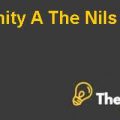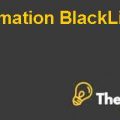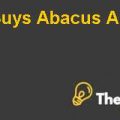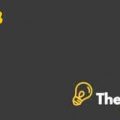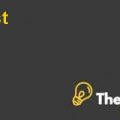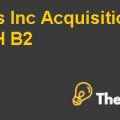Real Options Exercises Case Study Solution
Phase Six Opportunity:
The opportunity of phase six should not be incorporated in the analysis based on options, because it will provide the huge negative cash flows as compared to the cash flows from phase one and phase two.
Problem 3
NPVs for Both Market:
Table 3.1 shows the calculations of NPV through decision tree analysis for market A. The NPV found for market A is worth of 14.29 dollars.
Table 3.2 shows the calculations of NPV through decision tree analysis for market B. The NPV found for market B is worth of 23.57 dollars.
Table 3.1:
| Discount Rate | 5% | Cash Flows | ||
| Year 0 | Year 1 | |||
| 0.5 | ||||
|
|
Successful | $ 160.00 | ||
| $ 80.00 | ||||
| Market A | $ (100.00) | |||
| 0.5 | ||||
| Fail | $ 80.00 | |||
| $ 40.00 | ||||
| Weighted Average Outflow | $ 120.00 | |||
| Inflow | $ (100.00) | |||
| PV of Outflow | $ 114.29 | |||
| Net Present Value | $ 14.29 | |||
Table 3.2:
| Discount Rate | 5% | Cash Flows | ||
| Year 0 | Year 1 | |||
| 0.5 | ||||
|
|
Successful | $ 140.00 | ||
| $ 70.00 | ||||
| Market B | $ (55.00) | |||
| 0.5 | ||||
| Fail | $ 25.00 | |||
| $ 12.50 | ||||
| Weighted Average Outflow | $ 82.50 | |||
| Inflow | $ (55.00) | |||
| PV of Outflow | $ 78.57 | |||
| Net Present Value | $ 23.57 | |||
NPVs for Both Market:
To enter immediately into the market is best according to the combinations of time and place because both the markets provide the positive NPV and there aren’t any further calculations required to answer this question.
Capital Budgeting Rule:
The general capital budgeting rule for the purpose of selecting the optimal strategy to choose the right time and place to enter into the market is accounting rate of return method and payback period method.
Optimal Decision:
Table 3.3 shows the calculations of NPV through decision tree analysis for market C. The NPV have found for market C is worth of 5.24 dollars.
By testing the capital budgeting decision rule, it has been found that the market C is not providing the optimal decision for the problem, while the market B is providing the optimal decision for this problem as shown in Table 3.4, which gives the 43 percent accounting rate of return.
Table 3.3:
| Discount Rate | 5% | Cash Flows | ||
| Year 0 | Year 1 | |||
| 0.5 | ||||
|
|
Successful | $ 55.00 | ||
| $ 27.50 | ||||
| Market B | $ (40.00) | |||
| 0.5 | ||||
| Fail | $ 40.00 | |||
| $ 20.00 | ||||
| Weighted Average Outflow | $ 47.50 | |||
| Inflow | $ (40.00) | |||
| PV of Outflow | $ 45.24 | |||
| Net Present Value | $ 5.24 | |||
Table 3.4:
| Capital Budgeting Rule | Market A | Market B | Market B |
| Accounting Rate of Return | 14% | 43% | 13% |
This is just a sample partical work. Please place the order on the website to get your own originally done case solution.


